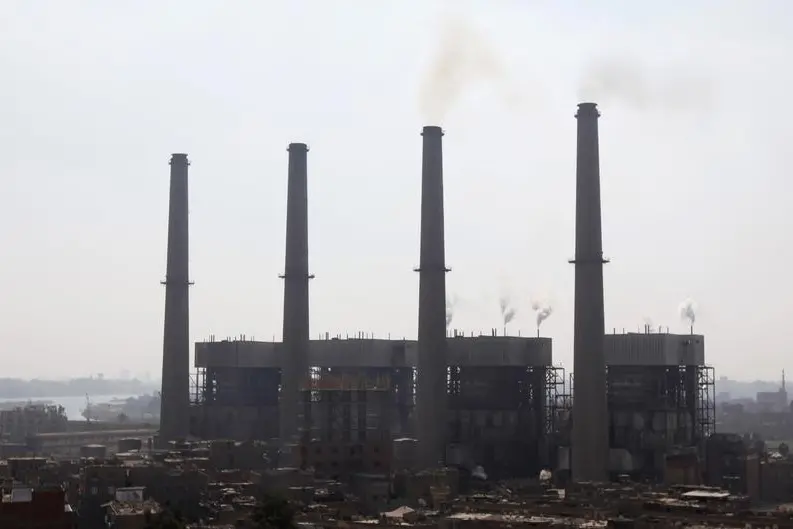PHOTO
Niveen Wahish reviews a recent study examining the options for reforming Egypt's energy pricing
It has been a year since the government partially cut subsidies on energy, a move seen by many as long overdue. The cuts included subsidies on electricity, fuel oil and natural gas.
While no new cuts have been announced as far as fuel and natural gas are concerned, more cuts on electricity are on track, with new prices announced this week. The cuts in the subsidies bill are viewed as essential to rein in the budget deficit, estimated at 10.8 per cent for fiscal year 2014/15.
The total subsidies bill accounts for 29 per cent of government expenditure and around seven per cent of GDP. In fiscal year 2012/13, energy subsidies accounted for 70 per cent of the total subsidies bill.
The first in a series of economic studies, a new report on "Energy Security in Egypt" from the Egyptian Centre for Economic Studies takes a closer look at options for energy pricing and makes recommendations for an energy mix that could help Egypt's energy insecurity.
The report is a reminder of the extent to which oil and gas and electricity prices in Egypt represent only a fraction of energy's real economic cost.
It also shows the extent to which energy subsidies are misallocated, saying that until 2014/13 70 per cent of petrol subsidies and 60 per cent of natural gas subsidies went to the wealthiest 10 per cent of the population.
And although 23 per cent of subsidies go on Liquefied Petroleum Gas (LPG), better known in the form of the butane gas cylinders intended to benefit the poor, it has been estimated that the three bottom income deciles benefit from only 25 per cent of LPG subsidies.
Electricity subsidies are likewise poorly targeted, with one third of them benefiting the richest 20 per cent of the population. Electricity is subsidised directly and indirectly. Direct subsidies are provided to consumers and indirect ones reach them through the subsidised petroleum products used in electricity generation.
The study recommends that the prices of energy products be determined based on the actual cost of delivering energy. It points out that the government calculates petroleum subsidies based on the difference between the actual cost incurred by the Egyptian General Petroleum Corporation (EGPC) and the price at which products are sold on the domestic market.
However, it cites studies that show that this calculation does not account for EGPC's share of the total cost incurred in extracting petroleum products in partnership with foreign companies.
"If the true value of the cost were reflected, the difference between actual costs and the domestic selling price would be much higher," it says.
The study recommends that reforms to energy pricing be done gradually over a transitional period. However, it says that the length of the transition depends largely on considerations of political economy and investments in other forms of energy.
It points out that studies show that a long transition period of over five years is more politically appealing, but delays the realisation of benefits and makes it difficult to sustain reform.
A shorter transition period of less than five years "generates more rapid budget savings but has a larger economic and social impact." Each country needs to make its choice based on political economy considerations and on careful assessment of impacts on poorer households, it says.
To mitigate negative effects on the poor of lifting subsidies the study recommends cash transfers to the poorest two quintiles of the rural and urban population.
The government should ensure that "30-50 per cent of the savings realised from the subsidy phasing-out are earmarked to cash transfers, particularly in the health, education and social protection domains," it says.
It estimates savings from subsidy reforms to amount to LE10 to LE15 billion per year, which "should be sufficient for compensation to the two bottom quintiles."
According to the study, sound pricing mechanisms would reduce inefficiencies and encourage the shift to renewable sources of energy.
It recommends an energy mix for Egypt's energy needs that consists of "61 per cent fossil, nine per cent renewable, seven per cent nuclear, eight per cent and 15 per cent solar and other sources of energy," highlighting the need to find further incentives for biomass energy production.
The study says that in order to increase reliance on renewable energy, the government should oblige industries to allocate a percentage of their energy use to renewables. And it should encourage the banks to facilitate loans to households to shift to renewables, especially solar.
Renewables in Egypt are mainly hydropower, wind and solar energy, the study says, adding that these currently account for only nine per cent of energy production. Of this nine per cent, 7.7 per cent are hydropower generated, 1.2 per cent wind, and 0.1 per cent solar.
© Al Ahram Weekly 2015












